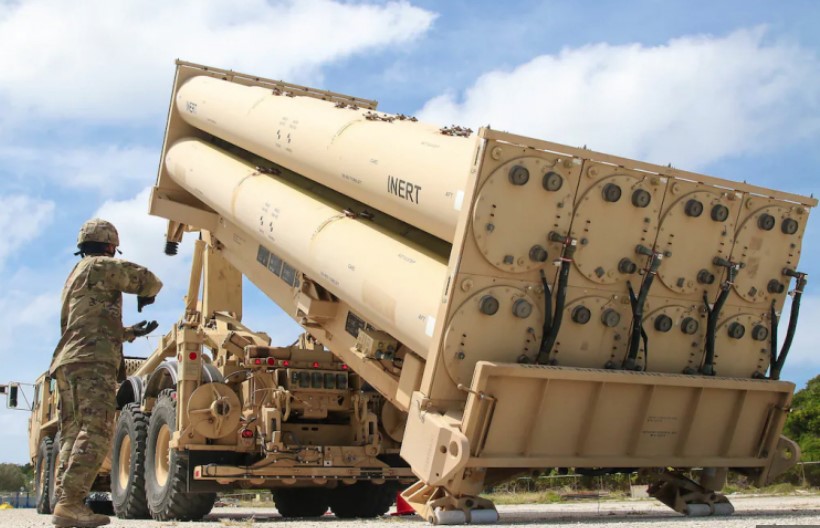Massive Use of U.S. Missile Systems in Israel
In June, a 12-day war between Israel and Iran uncovered a major concern within the U.S. military—an alarming missile shortage in its defense systems. The United States has only seven high-end THAAD (Terminal High Altitude Area Defense) systems. During the conflict, two of these were sent to Israel. Despite their deployment, it wasn’t enough to stop all incoming attacks.
Over those 12 intense days, U.S. operators, working alongside Israeli forces, fired more than 150 THAAD interceptors. That number equals nearly 25% of the total THAAD interceptors the U.S. has ever purchased. The rapid use of these munitions raised alarms at the Pentagon and clearly highlighted the growing missile shortage the U.S. faces during high-volume conflicts.
The situation became so urgent that U.S. officials even discussed redirecting interceptors that were already purchased by Saudi Arabia. This idea was highly sensitive, especially because Saudi Arabia’s cities and oil fields were also vulnerable to missile attacks during the conflict.
Decade of Shadow Warfare Ends in Flames — Inside Israel’s Most Ambitious Strike on Iran Yet
The missile usage didn’t stop with THAAD. U.S. Navy ships in the region also launched a large number of interceptors. Israel’s own defense systems, including Arrow and Iron Dome, also saw heavy use. Despite the intense defense efforts, dozens of Iranian missiles still managed to penetrate through the layers of protection, underscoring the operational pressure caused by the missile shortage across all systems involved.
U.S. Faces Missile Shortage and Readiness Strain
The war revealed that the U.S. missile defense inventory is not enough for long or intense conflicts. Each THAAD system can carry up to 48 interceptors and needs around 100 soldiers to operate continuously. Running two of these systems at the same time in one country was a first for the U.S.
During the war, the U.S. rushed in more interceptors. But even with those efforts, supplies were tight. A single THAAD interceptor costs about $13 million. The Pentagon has bought about 650 since 2010. The production company says it can make around 100 more this year. Still, rebuilding the supply used in the 12-day war may take over a year and cost up to $2 billion.
US Targets ICC Judges with Harsh Sanctions Amid Israel Investigation
Currently, five out of seven THAAD systems are deployed outside the U.S. Two are in Israel, two are assigned to Guam and South Korea, and one is in Saudi Arabia. Only two remain in the U.S., and an eighth system exists but isn’t fully ready. According to military guidelines, for every deployed system, another should be resting, and a third should be in training. But with so many systems in use, that balance no longer exists.
This heavy deployment raises worries about how prepared the U.S. really is for any sudden missile threat from other nations. With THAADs spread so thin, there may be no backups ready to respond quickly to another crisis.
Navy Destroyers and the Worsening Missile Shortage at Sea
As the conflict grew, the U.S. deployed seven guided-missile destroyers to support missile defense. These warships are equipped with advanced interceptors called SM-2, SM-3, and SM-6. During the war, U.S. ships fired about 80 SM-3 missiles. Each of these costs between $8 million and $25 million.
However, concerns have surfaced about how effective some of these missiles were. Officials are currently studying the data to figure out why certain threats got through. It’s possible that multiple ships fired at the same targets due to communication challenges. In the heat of battle, it’s difficult to tell which radar contact is a real threat, a decoy, or just debris.
Another serious issue is that once a ship runs out of interceptors, it must go back to port. Currently, there is no safe or reliable way to reload these large 30-foot missile canisters at sea. This reloading problem is made worse by rough sea conditions, which make inserting heavy missiles into narrow launch tubes dangerous.
💣 Qased launch leaves no doubt—Iran’s message to Israel and the U.S. is war-ready
Israel, despite having its own strong air-defense systems like Iron Dome and Arrow 3, was also facing shortages. If Iran had launched a few more massive missile strikes, Israel might have run out of its best interceptors. The U.S. and Israeli navies worked together to manage the skies, but even this strong cooperation couldn’t prevent every missile from getting through.
The war showed that when large numbers of missiles are launched at once, it becomes very difficult to stop all of them. Sailors and operators have to make split-second decisions, often while surrounded by dozens of flying objects including boosters, warheads, and decoys. These conditions push missile defense systems to their limits.
